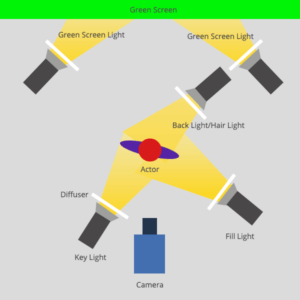Making a video presentation is quite easy, as you can use a simple webcam or through a smartphone’s camera.
Start by defining what of the 4 types of presentation you wish to utilise:
- Informative
- Demonstrative
- Persuasive
- Inspirational
Creating Content
Have a clear objective
What objective do you want to portray? Do you want your audience to come away impressed and informed?
Make a bold statement
A bold statement can capture your audience’s attention right from the start. Your statement should offer something slightly unusual and maybe even a little controversial. Something to make people sit up and take notice.
Tell a story
A personal, human story works because it the audience can relate to it on a personal level. Think about some stand-out examples of human stories that relate to your business or idea, and tell that story so people will connect with the central character. The bigger the emotion the better: love, longing, overcoming obstacles, things we’ve all had to deal with at some point in our lives.
Use music
Music has great power to support and enhance the emotion in a video presentation, and has been proven to sustain an audience’s attention and aid in information retention. Music is used in movies to suggest an emotional state to the viewer, so why not in a video presentation?
Visual Metaphor
Combining pictures and text is one of the best ways to help people engage with and retain information. There’s something about how our brain works that makes text by itself far less memorable, so if you can combine something visual with your message, you’ll keep people’s attention longer and they’ll remember more of your presentation.
Use questions
Questions can be a great way to open a presentation, because they encourage the audience to think for themselves. It opens them up to a realm of critical thinking, which is perfect when you give them your impactful message.
Have you ever considered what life would be like if you didn’t have to save money?
Humour
Having a laugh can really do a lot to win over an audience. There’s no need to be too serious, and even if you’re dealing with a heavy topic, lightening the mood can work wonders.
Repetition
Repetition can be used in several ways: by offering several one-word sentences in a row (the repetition is in the rhythm), or by repeating a word or a key phrase several time throughout your presentation.
Repetition is powerful. It drives home your key message and strengthens your position.
Motion Graphics
Motion graphics is a form of animation that contains text as moving graphics catches the eye and helps to engage people. You can use this at the start of the presentation and partway through to increase engagement.
Quotes
Quotes are a great way to impart a message in a presentation.
If you are partaking on a presentation that could be intense, then a quote from Einstein would work. If you want to say something meaningful and poetic, then a quote from Shakespeare should convey wisdom.
Audio narration
Audio narration can change the mood of a presentation, especially if the voice is powerful and the words are heartfelt.
Use colour
You can experiment with colour, use bold colours and mix in primary and secondary colours. Even black and white can have a striking effect on a presentation.
Use illustrations
Illustrations are a great way to communicate effectively.
Illustrations can draw the eye and make your presentation more interesting.
Finish on a meaningful note
Your presentation will only give your audience a lasting impression if you end it right.
It’s important to let the audience know what you want them to do next: to visit a website for more information, to ponder an idea or new direction, or to take action toward a particular goal.
An attention-grabbing visual will work really well here, along with a meaningful end to the music – a change of pace, volume, or pitch.
What’s the takeaway message? A strong CTA (call to action) will ensure your presentation is memorable and much more likely to be talked about.
Improving delivery
Improving the content is one way to deliver and impressive presentation, but there are ways to make a presentation more professional going forward.

Lighting
Perhaps the most powerful way to improve a presentation is to impove lighting.
Natural lighting creates shadows, especially on the face, so professionals shoot video in a studio where they can create their own lighting arrangements.
In Chroma Keying, there are typically 3 different types of lighting used to illuminate the scene:
Key light
The key light is the first and usually most important light that a photographer, cinematographer, lighting cameraman, or other scene composer will use in a lighting setup.
Fill light
Kicker light
A kicker light is an accent light that highlights the edges of a subject. A hair light is a type of kicker, as it is pointed at a subject’s hair from behind or the side to add non-frontal illumination intended to accent that part of the subject. An interchangeable term for “kicker light” is “rim light.” Kicker lights tend to create highlights that are brighter than that of the key light. Kicker lights are often used to illuminate the green screen.
Props
Props (short for Theatrical Property) are items that are used to set a scene, if you are an artist, then an easel and paint on a pallette could be a prop to show people what you do.
Choose appropriate props to keep your audience engaged with what you do.
Chroma Key
Traditionally known as a bluescreen, a piece of material is placed behind the actor or actress and is used to key out the background which allows another background to be placed behind.
Although the “blue” screen is where the name comes from, most people use a green screen. Colour should be chosen wisely, as people with blonde hair tend to be harder to work with in Chroma Keying on a green screen.
In the movie The Matrix, they used a magenta screen, because it was a colour not often seen on set, and blonde hair isn’t that affected by magenta as it is green.
Emillia Clarke was filmed on a green shape with a green background so both the foreground and background could be edited in on Game of Thrones when she was flying on one of her dragons.
Chroma Key is the process of editing out the background using video editing software.

Lower Thirds
Lower thirds is apparently it’s proper name, it defines what you see at the bottom of a video.
You may see on screen the person’s name and their role when watching the news for instance, or the ticker on the financial news, that is shown on the lower thirds.


